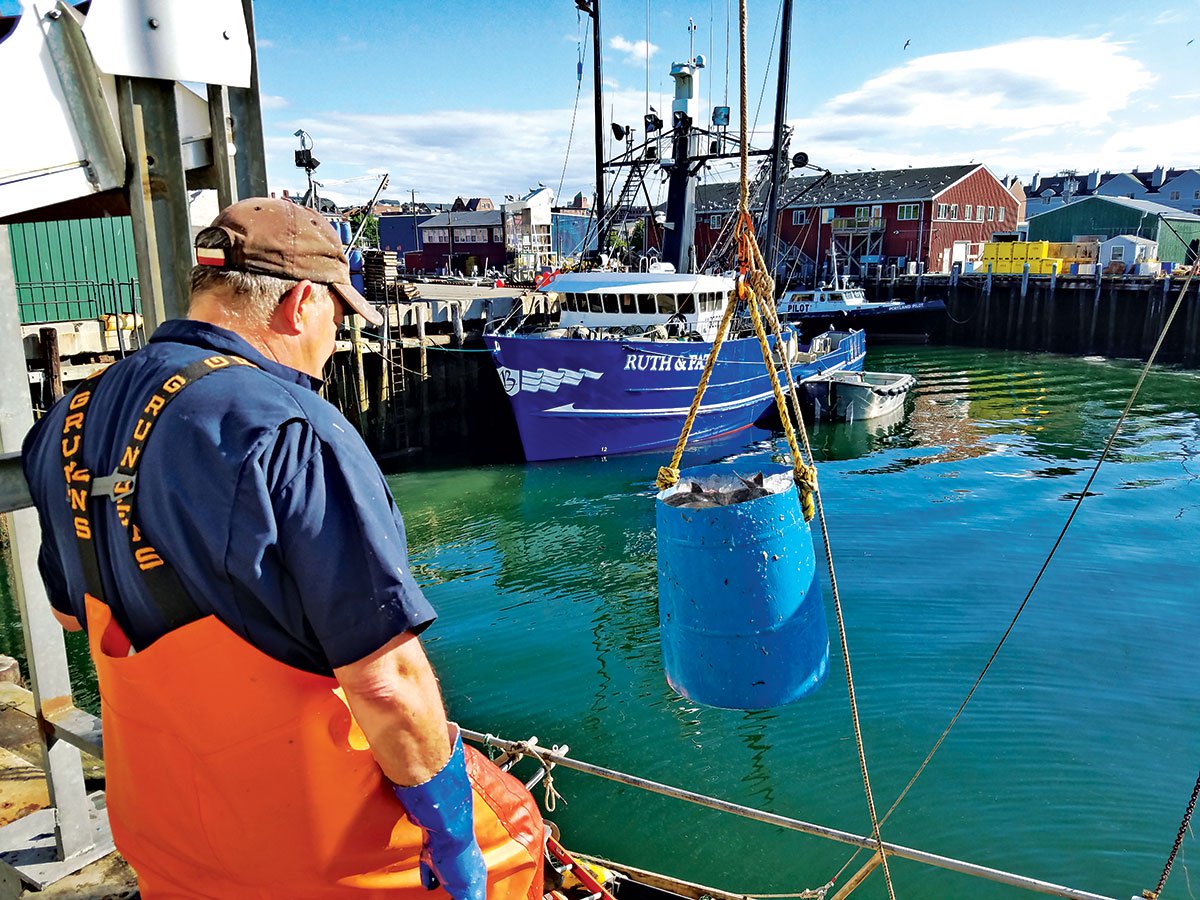Pillars of the Port City
Portland, Maine’s waterfront has changed, but locals are committed
to keeping it working
Thirty years ago, when the Portland Fish Exchange was founded, Maine’s largest city had docks lined with draggers, and its cobblestone streets ensnared many a crewman en route from one of the infamous Three Doors of Hell on Commercial Street.
Now the city, established in 1633, is at turns embracing and balking at a period of gentrification. As the Northeast groundfish fleet became more strictly regulated at the turn of the century, draggers from other Maine ports came to land in Portland. Over the last decade, boats began to leave the harbor for southern New England ports that made it easier or more lucrative to land fish.
Today Portland is home to a handful of draggers, gillnetters and longliners and as many as 250 lobster boats, depending on the season.“We have a pretty dynamic fleet,” says acting Harbormaster Kevin Battle. “They’re keeping themselves busy. They adapt as needed.”
While the groundfish fleet struggles to stay afloat, the state’s lobster industry is enjoying watershed landings and prices for several years running. And local businesses are catering to the upswing.
“There are pallets of salted herring using the Fish Exchange’s cooler. Bait has become an incredible industry for us,” says Bill Needleman, who has worked for the city for 16 years, the last two as waterfront coordinator. “We’ve had to diversify.”
Diversification hasn’t been a problem for Portland, which has become known for its restaurants and a burgeoning arts community, both big draws for tourists, its cobblestones now turning the ankles of high-heel-clad restaurant and bar patrons in the Old Port. The small downtown that once hosted three hotels has more than doubled its capacity in the last decade with proposals for more.
It seems a new boutique or high-end chain hotel with ground-floor fine dining pops up from the city’s once hardscrabble street corners as fast as black fly bites in mud season. And that’s nothing compared with the food scene. Portland lives at the top of lists for small cities that love to eat and drink with local breweries, distilleries, coffee roasters and fermentories feeding a seemingly insatiable local appetite for funky brews and chews — sustained most of the year by a modest population of about 65,000.
“It’s a delicate balance,” Needleman says. “The traditional working piers have very tight restrictions on the berthing, but we do allow restaurant and retail use” on the wharves. “These piers, many of which are over 150 years old, require an incredible amount of upkeep.”
Maintaining working piers has meant allowing mixed use to generate income for pier owners while encouraging traditional dock frontage. What does that mean for the working waterfront? If native Mainers have anything to say about it, the true grit of Portland is here to stay. A growing suite of maritime businesses dedicated to keeping a hold on the working-class waterfront seems to be, well, working.“We like boutiques and restaurants, but we need to have product coming over the side in order to keep these piers working,” Needleman says.
For all the gentrification, Mainers pride themselves in having something to show for their work besides a paycheck. Portlanders are proud of their city and the quality of life that draws people here, including the working waterfront.“I don’t think there’s anyone in the city who wants to see the working waterfront change,” says Bert Jongerden, manager of the Portland Fish Exchange.
Three years ago, the city launched a springtime Walk the Working Waterfront tour to showcase some of Portland’s hidden (and historic) gems. The tour includes visits to seafood processors, ice distributors, the harbormaster, a U.S. Coast Guard boat, the fireboat and even seafood samples. The timing — this year taking place on June 11 — puts it after the coldest stretch of spring but before the true kickoff to tourist season, which begins around the Fourth of July. This tour, it seems, is tailored to educating locals on the history of their working waterfront city.
“I don’t like the word ‘quaint,’” says Needleman. “We want our tourists and our new residents to understand the marine economy. The waterfront is active. They need to know that they are part of that activity. They have a much richer experience if they know the story behind that lobster roll. And they’re going to be more tolerant of...
Read full article in our August issue page 24.
» Read more Cover Stories here.
» Read more articles in our August issue.
» Fish eNews offers the latest industry news.
» Like us on Facebook.
Copyright © 2016 National Fisherman. All rights reserved.







